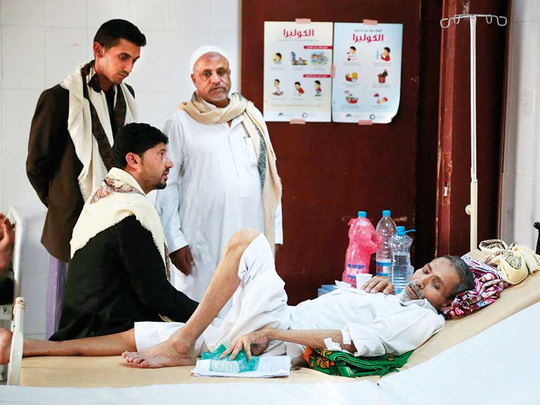
Sana’a: The cholera outbreak in Yemen, which has killed over 2,000 people, has started to recede but there was still no grounds for complacency regarding the health situation in the country, according to the Unicef.
Deputy Representative of Unicef to Yemen Sherin Varkey has said that although the situation is easing off in some parts of the country, there are still other areas where cholera-related cases are increasing.
Varkey attributed the improvements of the situation in Yemen to the combined interventions in the areas of health, water supply and sanitation.
The Unicef representative, however, warned that with the generally poor sanitation and sewage systems, the upcoming rainy season could aggravate the spread of the disease again.
Varkey concluded that all efforts must be continued in order to ensure that the outbreak is finally contained in the shortest possible time.
The World Health Organisation (WHO) has said that the number of suspected cholera cases in Yemen has reached half a million.
Since the death of the first cholera victim in April 2016, the disease has spread over the entire country, due to poor hygiene and sanitary conditions, as well as the shortage of clean water supply, according to the WHO.
Children account for 41 per cent of those who have been infected with the disease, according to the UN Office for the Coordination of Humanitarian Affairs.
With more than half of all medical facilities in Yemen closed due to the disastrous effects of the war, Yemen’s health service has struggled greatly with the country’s cholera epidemic.
The number of suspected cholera cases in Yemen is expected to continue to increase and surpass a whopping 600,000 by the end of this year, according to predictions by the International Committee of the Red Cross.
Cholera mortality rate with early detection and proper treatment is less than one percent, but rises to 50 to 60 per cent if left untreated, according to the WHO.
Last month, UN Humanitarian Relief Coordinator Stephen O’Brien said that “millions of Yemeni civilians - women, children and men - continue to be exposed to unfathomable pain and suffering” at the hands of the epidemic.
The health crisis in Yemen is also due to the armed conflict, which started in 2014, when Iran-backed Al Houthi rebels seized the capital Sana’a and other provinces in a coup.
The civil conflict has has killed more than 7,600 people and injured 42,000, placing more than 20 million Yemenis in dire need of humanitarian assistance.












